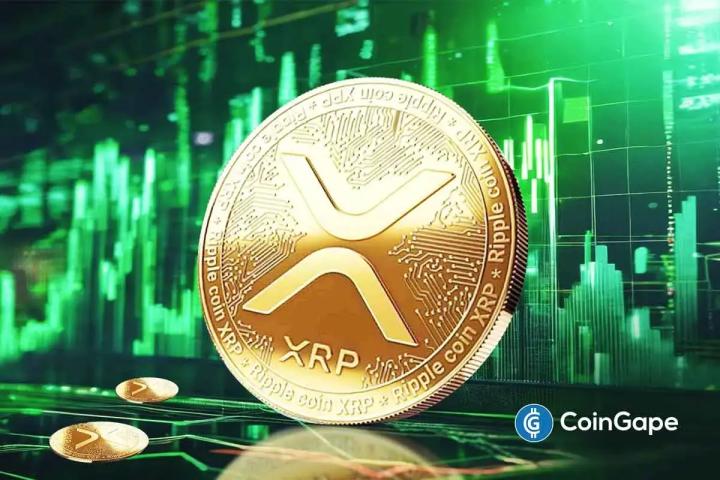
The SEC is developing an “innovation exemption” to expedite approval of digital asset products before the end of the year, Chairman Paul Atkins Chia Fox Business.
The new approach aims to create a “stable foundation” for the market to launch cryptocurrency products while the SEC finalizes a specialized regulatory framework, along with general listing standards and ETF rule 6c-11.
- The SEC is pursuing an “innovation exemption” to temporarily relax the old requirement, prioritizing approval of digital asset products before the end of the year.
- First US multi Cryptoasset crypto ETP launches under common listing standards, leveraging ETF Rule 6c-11 mechanisms.
- Paul Atkins argues that very few Token are securities, highlighting the context of the offering; and launched Project Crypto to modernize the law.
What is the SEC “innovation exemption”?
It is a targeted exemption mechanism, creating a temporary regulatory “windhole” for crypto companies to launch new products under lighter oversight, while the SEC finalizes specialized regulations.
This approach acts as a carve-out: loosening old securities rules for product testing while maintaining oversight and limiting scope. According to the SEC, this is not “unconditional relaxation,” but rather a transitional step to balance innovation and investor protection (see policy guidance in SEC speech: American Leadership in the Digital Finance Revolution, July 31, 2025).
“We are looking for an ‘innovation exemption’ — and trying to get this mechanism in place before the end of the year.”
– Paul Atkins, SEC Chairman, 3rd, Fox Business (Mornings with Maria)
How does the SEC set the timeline and why is it important?
The SEC said it is undertaking a rulemaking process over the next several months, with the goal of finalizing the “innovation exemption” before the end of the year so the market can deploy the product in a timely manner.
A clear timeline helps companies plan their product launches, and investors get early access to a compliance investment channel. According to Atkins, the agency wants to provide a stable platform rather than an ad hoc approval, giving the market more confidence when introducing new products.
“This is not just a situational approach. We are trying to give the market a stable platform for them to introduce new products.”
– Paul Atkins, SEC Chairman, 3rd, Fox Business (Mornings with Maria)
What's so special about the first multi- Cryptoasset ETP in the US?
The product, which launched on Friday, gives investors exposure to Bitcoin (BTC), Ether (ETH), XRP (XRP), Solana (SOL), and Cardano (ADA) in a single ETP, expanding portfolio diversification options.
Grayscale’s cryptocurrency funds are listed under newly published common listing standards, which shorten the approval process and align with the mechanism of ETF Rule 6c-11 (SEC, 2019). ETF Rule 6c-11 allows multiple ETFs to operate without the need for individual exemptions, thereby speeding up the normal process (SEC Release No. 33-10695, Exchange-Traded Funds, 2019).
How do the General Listing Standards and ETF Rule 6c-11 help?
The general listing standard reduces the reliance on case-by-case approvals, thereby shortening the time to listing for products that meet the pre-determined criteria.
Technically, Rule 6c-11 standardizes operational, disclosure, and supervisory requirements, thereby reducing approval friction. When applied to digital asset-related products under the appropriate framework, exchanges and issuers can take advantage of a “highway” process rather than a single “shortcut,” which Atkins cites as an example of moving forward.
What is Project Crypto?
Project Crypto is an initiative announced by SEC Chairman Paul Atkins on July 31 to modernize securities rules for cryptocurrencies and support the transition of US financial market infrastructure onto on-chain.
The central objective is to review and update outdated rules as they apply to Blockchain technology. Instead of piecemeal adjustments, the project aims to create a consistent framework, promote competition and protect investors in the context of the increasing popularity of digital assets (SEC, speech 07-31-2025).
What is the goal of Project Crypto?
The goal is to “enable America's financial markets to move on-chain” – supporting the US financial markets to operate on Blockchain infrastructure in a compliant and efficient manner.
This approach demonstrates the SEC’s desire to move from legal identity debate to building a regulatory infrastructure, standardizing disclosure, custody risk management, and transaction oversight. With the “innovation exemption” that accompanies Project Crypto, businesses have room to experiment, and regulators have real-world data to refine the law (SEC Press Release No. 2025-68, April 2025; SEC Speech July 31, 2025).
Atkins rates Token as securities?
He believes that very few Token are securities; it depends on the “package” and the way they are offered. This is a significant departure from his predecessor.
While former Chairman Gary Gensler has emphasized that most digital assets can be securities under the Howey test, Atkins advocates an approach based on the context of the issue and the structure of the rights. The Howey test, which XEM the expectation of profit from the efforts of others, is a legal foundation dating back to 1946 case law (SEC, Framework for “Investment Contract”, 2019; SEC v. W.J. Howey Co., 1946).
What does the difference between Atkins' and Gensler's positions mean?
Different definitions lead to different trajectories of approval and enforcement. With Atkins, the priority is to categorize based on sales method and benefit characteristics, not assign default labels.
If institutionalized, this approach could reduce the scope for widespread “securitization,” thereby lowering compliance costs for projects with a clear utility structure. Conversely, sales that seek to profit from third-party efforts remain under close scrutiny. A clear distinction is beneficial for both innovation and investor protection.
Why does the SEC want to create a “steady foundation” instead of approving individual cases?
A stable platform helps businesses predict their roadmap and criteria, instead of depending on “each profile’s privilege”. This reduces legal risks and Capital costs.
On the market side, the common framework allows exchanges and issuers to synchronize processes, speeding up the pace of bringing safe products to the public. According to Atkins, the goal is to move systematically, not just address individual situations, thereby increasing trust and consistency of policy.
Potential impact on businesses, investors and market liquidation
In the short term, the “innovation exemption” could trigger a wave of regulated crypto product testing, expanding investor choice and increasing market depth.
In the medium term, standardization will reduce launch times and compliance costs; but companies will have to meet disclosure, custody risk management, and platform monitoring mechanisms. For investors, the benefits are diversification, but volatility risks and underlying asset characteristics must be taken into account. Disclosure and monitoring discipline will be important barriers.
Risks and challenges remain
Temporary exemptions can be abused without an exit mechanism and post-test evaluation criteria. Therefore, linking exemptions to risk management thresholds is crucial.
Furthermore, asset classification between securities – commodities – other assets still requires inter-agency coordination. During the testing process, compatibility with anti-market manipulation regulations, investor protection and depository standards are technical bottlenecks that need specific solutions from the SEC and the listing floor.
Comparison table: Before and after “innovation exemption” (proposed)
The new approach is expected to change the pace of approvals, the scope of oversight, and how businesses test digital asset products.
| Criteria | Before the exemption | When to apply the exemption (proposed) |
|---|---|---|
| Approval process | Depends a lot on each profile, time is hard to predict | Standardize, leverage common listing standards and 6c-11 |
| Monitor | Fully comply with the old rules from the beginning | Lighter supervision, controlled testing scope |
| Release date | Often lengthy, situational approval | Shorten the route with pre-defined criteria |
| Policy orientation | Fragmented assessment, lacking an overall framework | Towards a stable foundation, empirical data supports lawmaking |
References and relevant legal context
Chairman Paul Atkins's statements and policy guidance are outlined in interviews on Fox Business and official SEC documents. The legal underpinnings include ETF Rule 6c-11 and the Howey analytical framework.
Source: Fox Business (Mornings with Maria); SEC Press Release No. 2025-68 (April 2025); SEC Speech “American Leadership in the Digital Finance Revolution” (July 31, 2025); SEC Release No. 33-10695, Exchange-Traded Funds (2019); SEC, Framework for “Investment Contract” Analysis of Digital Assets (2019).
Frequently Asked Questions
Is “innovation exemption” a regulatory bypass?
No. This is a temporary carve-out with lighter oversight and clear criteria for testing products while the SEC develops specialized regulations. The foundation remains SEC-standard investor protection.
What cryptocurrencies does the new multi-asset ETP feature?
The product offers exposure to Bitcoin (BTC), Ether (ETH), XRP (XRP), Solana (SOL), and Cardano (ADA). According to the SEC, Grayscale's fund takes advantage of the common listing standards and the 6c-11 mechanism to speed up approval.
What will Project Crypto change for businesses?
The project aims to modernize rules, unify criteria for publication, deposit, and supervision, help businesses have a clearer product launch roadmap and reduce dependence on individual case approval.
How did Atkins's views differ from those of Gensler?
Atkins argues that very few Token are securities, depending on how they are structured and offered. Gensler notes that most digital assets could be securities under Howey. This distinction affects the scope of supervision and compliance costs.
What Vai does ETF Rule 6c-11 play?
6c-11 standardizes ETF operations, allowing multiple funds to operate without individual exemptions, thereby speeding up approvals. When applied appropriately to digital asset-related products, the process can be faster and more transparent.








